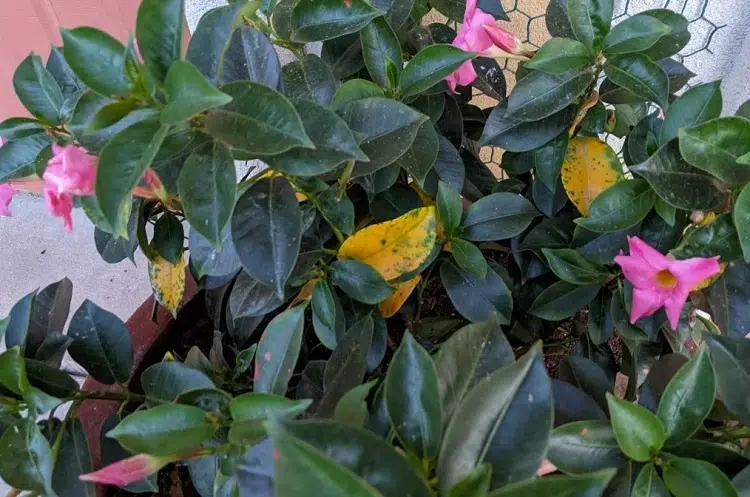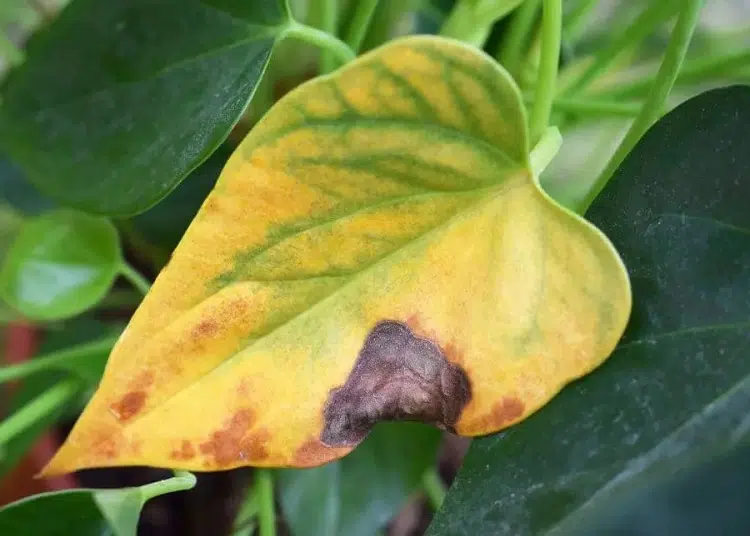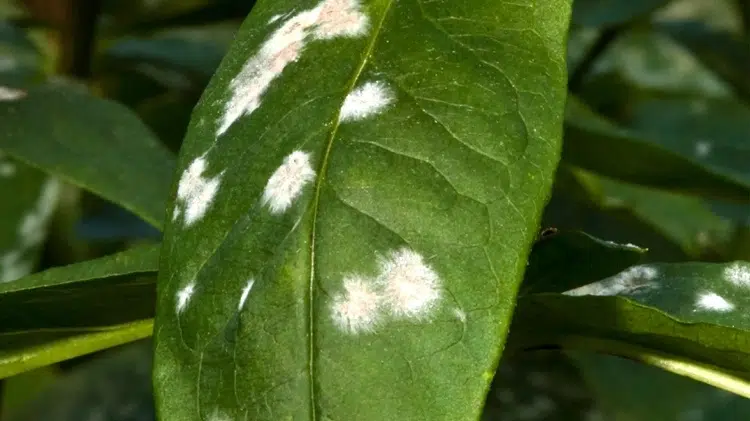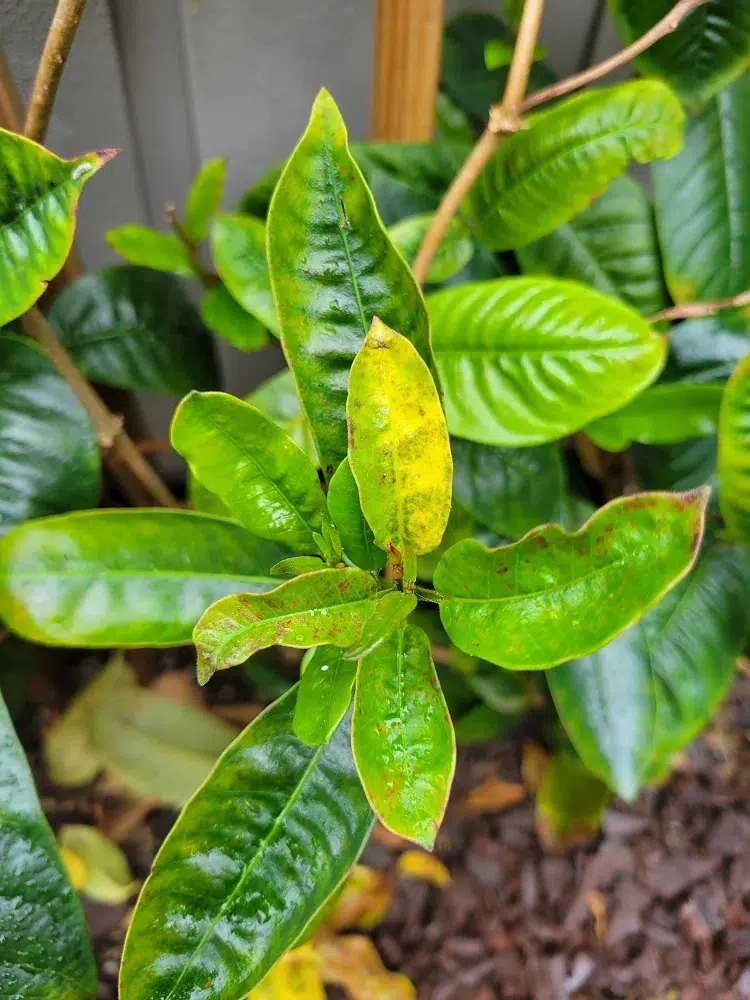Dipladenia is a very popular plant and for a good reason. It blooms beautiful colors and enchants with its delicate scent. Although it is very easy to care for and blooms effortlessly every spring, some problems can arise when it comes to keeping this magical plant in good condition. What to do when dipladenia has yellow leaves? Why does this happen and how to fix it? We have the answers!
Why Dipladenia Has Yellow Leaves?
Why dipladenia leaves turn yellow and fall? There are many reasons for this very common problem. Most of the time, it’s because of things we often overlook. Whether you have a dipladenia in a pot or in the garden, the leaves can start to turn yellow if you are not careful enough with its care. If you can’t figure out why this is happening, we are here to give you all the reasons listed below and the solutions that are very easy to implement! So let’s talk about it and save your plant before it’s too late!
Dipladenia Has Yellow Leaves Because of Disease
Why my dipladenia has yellow leaves? Fungal diseases are very common in many plants. For example, just like tomatoes, dipladenia can contract powdery mildew, which is most commonly caused by overwatering the plant, creating the perfect environment for fungi to grow. Other diseases include leaf spots and botrytis. However, leaf spot and powdery mildew are the most common. It is possible to buy a fungicide or make a natural fungicide yourself. Check the soil. If it is wet and you have overwatered your plant for a long time, water the top of the soil again when it becomes dry. Powdery mildew can also be recognized by the white spots on the leaves.
Dipladenia Has Yellow Leaves Because of Inadequate Watering
Yes, overwatering can be the catalyst for many fungal diseases on dipladenia. However, watering goes both ways. You can make the mistake of not watering enough or watering way too much. In either case, the plant will suffer and most likely die. Yellowing and curling leaves are a good indication that you are not watering your dipladenia properly. They may even start to turn brown at some point. When should I water my dipladenia? In general, 1 to 2 times a week is enough, but once a week may be enough. And although dipladenia can survive periods of drought, you shouldn’t leave it for more than two weeks without water. Try not to test its limits.
Insect Attack: Aphids
Whether you have a dipladenia in the ground or in a pot, there is always a risk of infestation by insect pests. For example, if you haven’t been paying attention to your plant’s stems, but you’re starting to notice yellow leaves, it might be time to examine them! In general, this can happen when dipladenias are infested with aphids. What can you do about it? A very good natural method to get rid of them is to use either neem oil or dishwashing liquid mixed with water. This will kill them and prevent them from returning. You can also get rid of them with just water if you use a garden hose. However, I recommend the neem oil and water and dishwashing liquid method.
Dipladenia Has Yellow Leaves: Lack of Fertilizer
Your plant may very well be lacking valuable nutrients. This happens when it’s not planted in the right type of soil with the right pH. Adding a natural fertilizer will help strengthen the plant and “feed” it with these nutrients. So, this could also be a reason why your Dipladenia has yellow leaves. The preferred pH of dipladenia is rather alkaline – between 6.5 and 7.9. This plant doesn’t like coffee grounds, so don’t add them, as they’ll make the soil acidic! Instead, use crushed eggshells, lime or bone meal.
How to Maintain Dipladenia from One Year to the Next?
Since we’re almost in the middle of fall, you know what that means! Colder temperatures and strong winds! If you want your dipladenia to survive the winter and bloom with bright colors next spring, here is what you should offer it over the next few months:
The right temperature. When night temperatures drop to 50F/10C, it is time to bring your dipladenia indoors so that it benefits from warmer conditions in which to thrive. This plant is quite delicate, so be sure to keep an eye on the temperatures to know when is the best time to give your plant some warmth!
Soil. Dipladenia likes alkaline soil, as we mentioned above. Aside from that, fertile, well-drained soil will keep it happy and thriving for longer.
Watering. When winter arrives, it may be necessary to space out waterings. Be sure to water once every 10 days or when the soil is dry enough.
Wintering dipladenia. Let’s say you planted a dipladenia in the ground and you can’t move it into a pot. This will also cause stress to the plant, although it is an attractive option. The best thing to do is to mulch the ground around the plant with straw, bark or dry grass clippings and lay a veil around the plant.
Also read: When to Bring Dipladenia Indoors in Winter?





